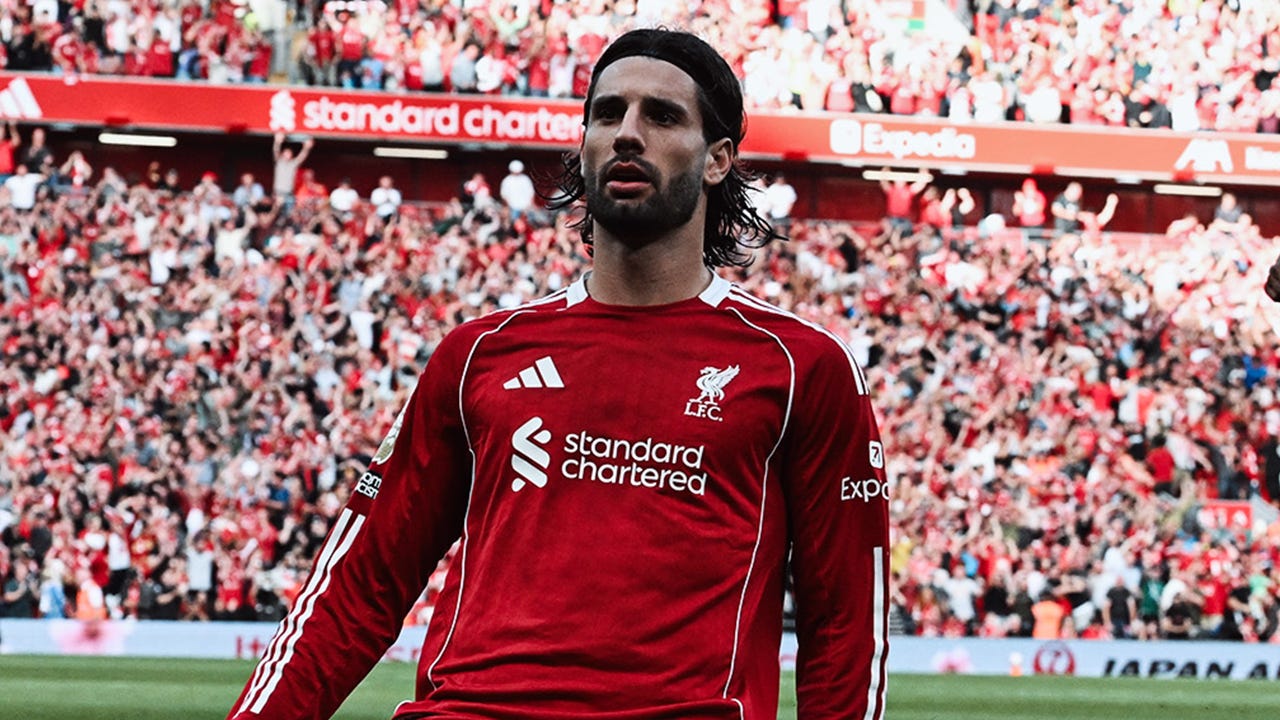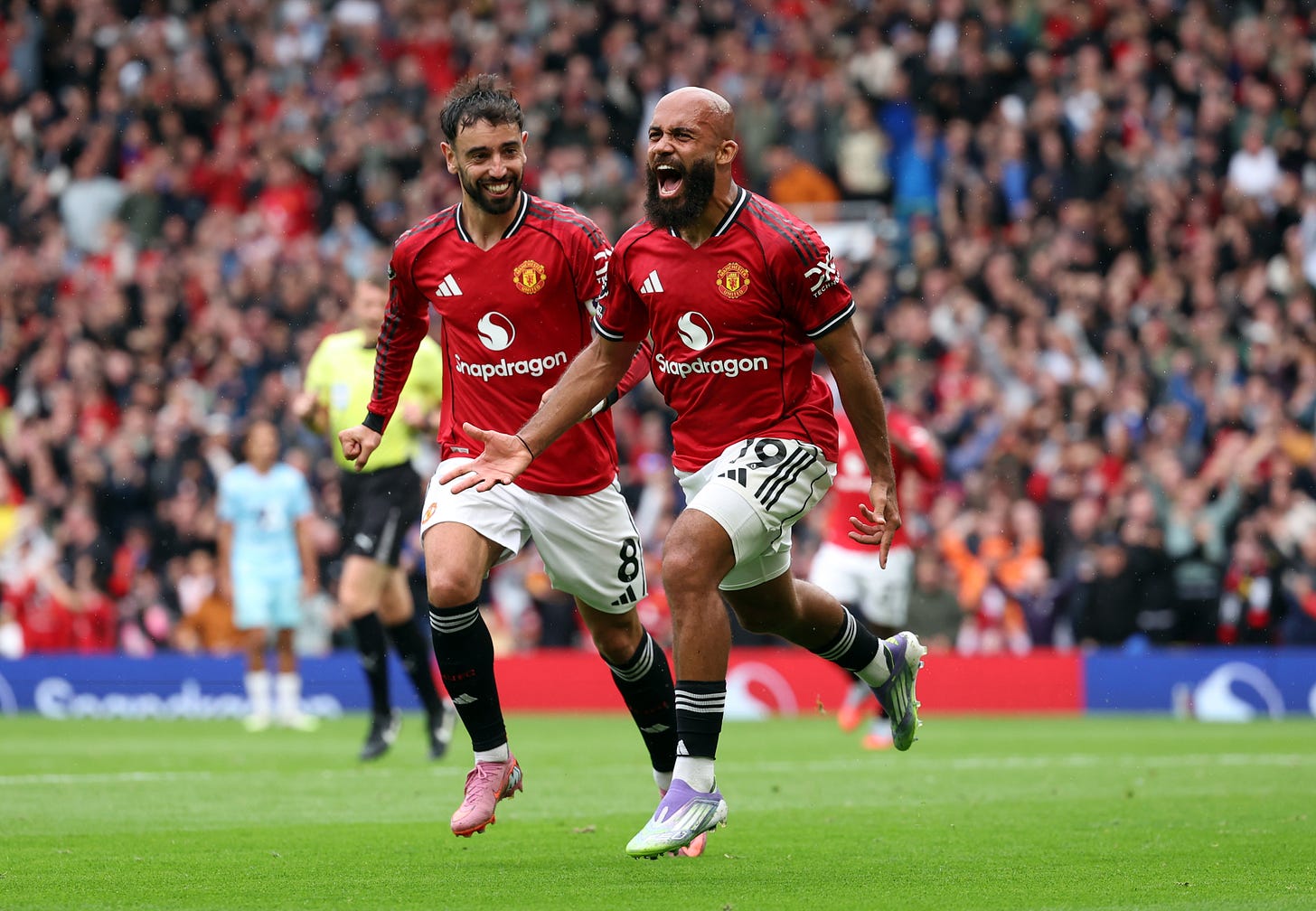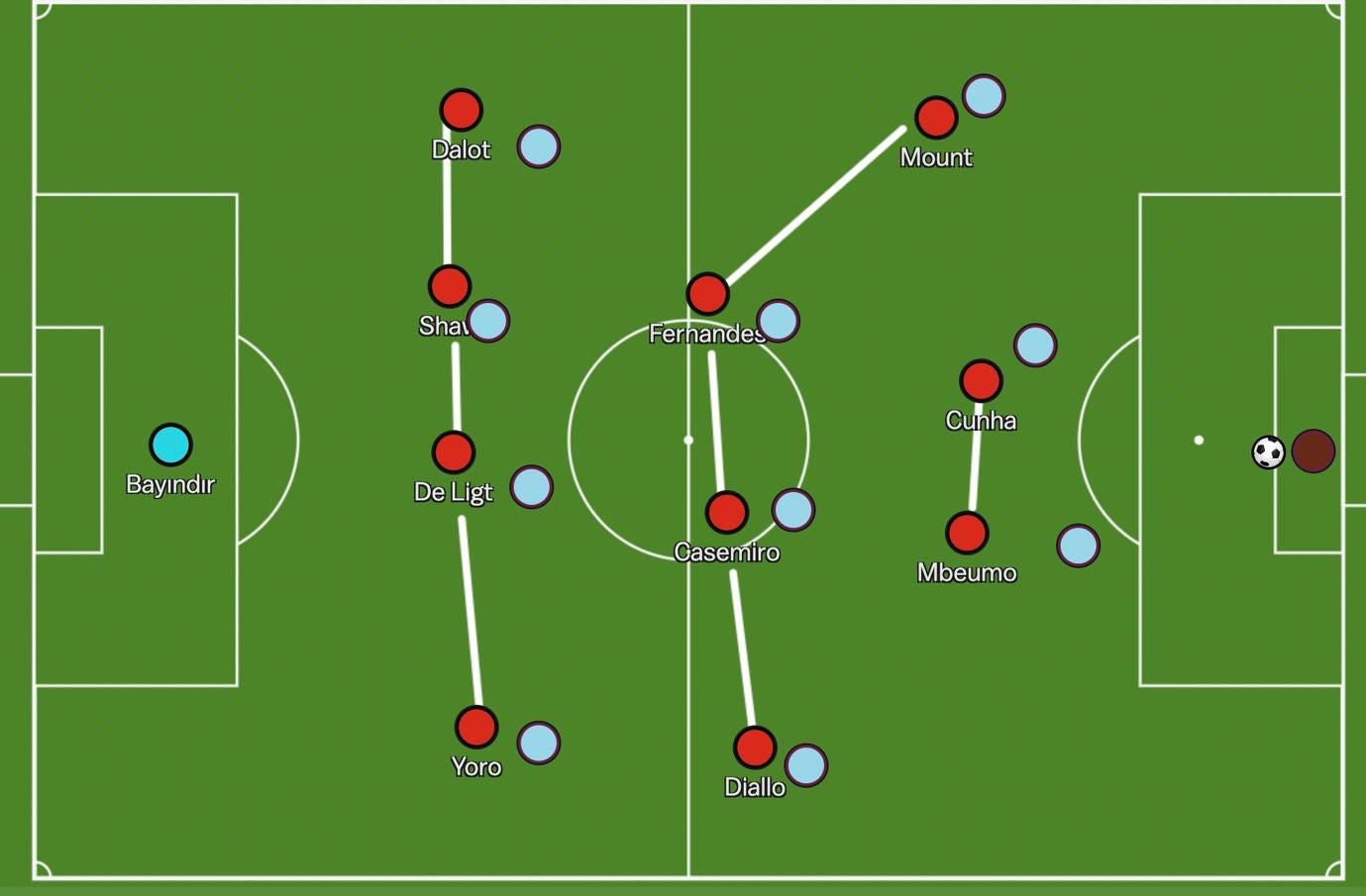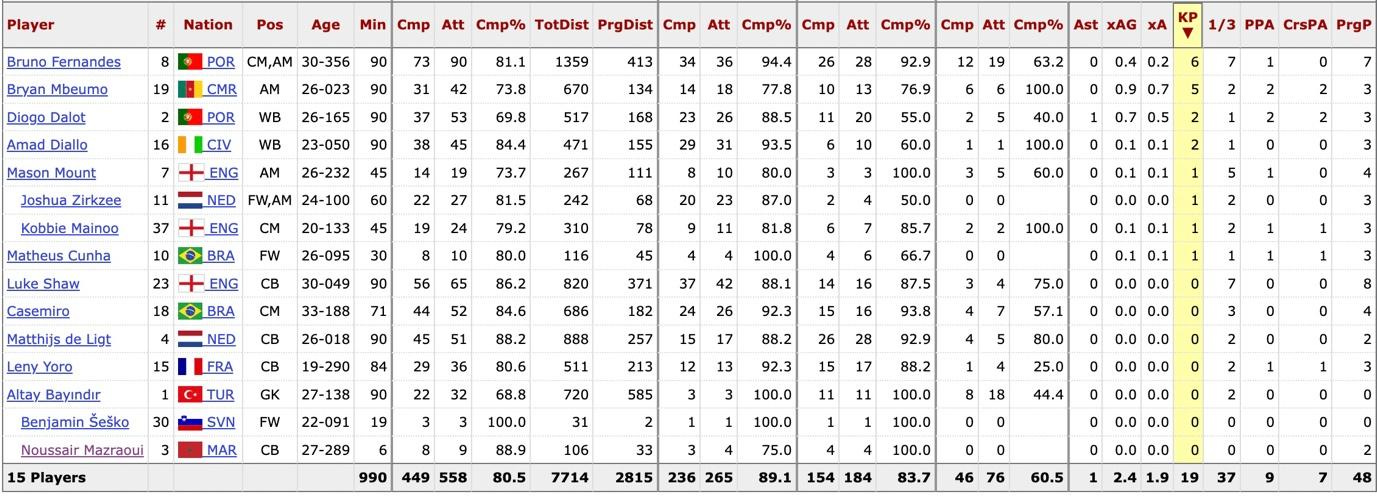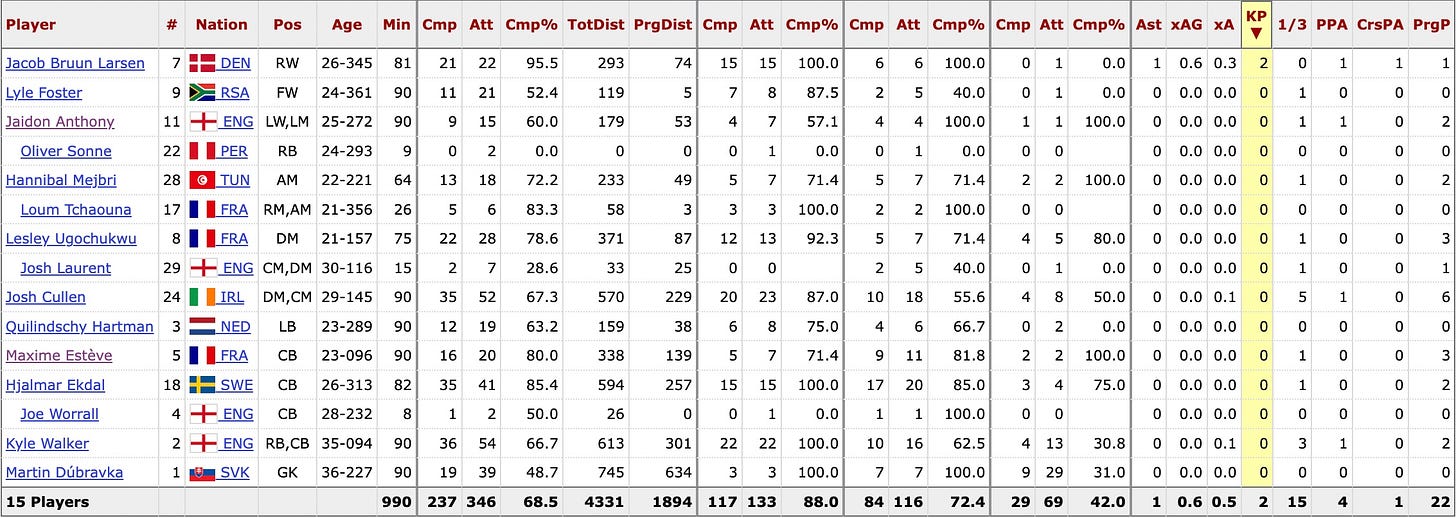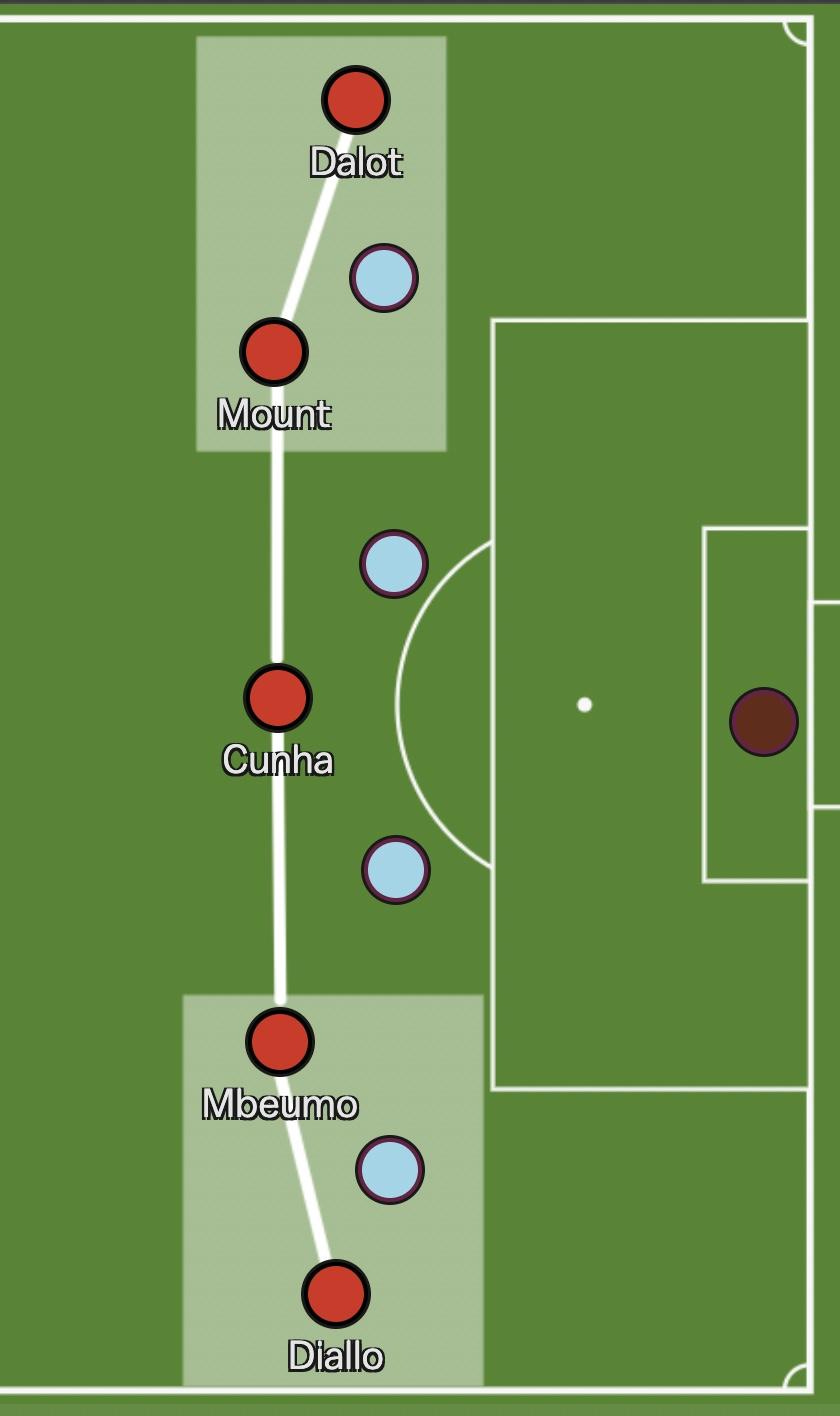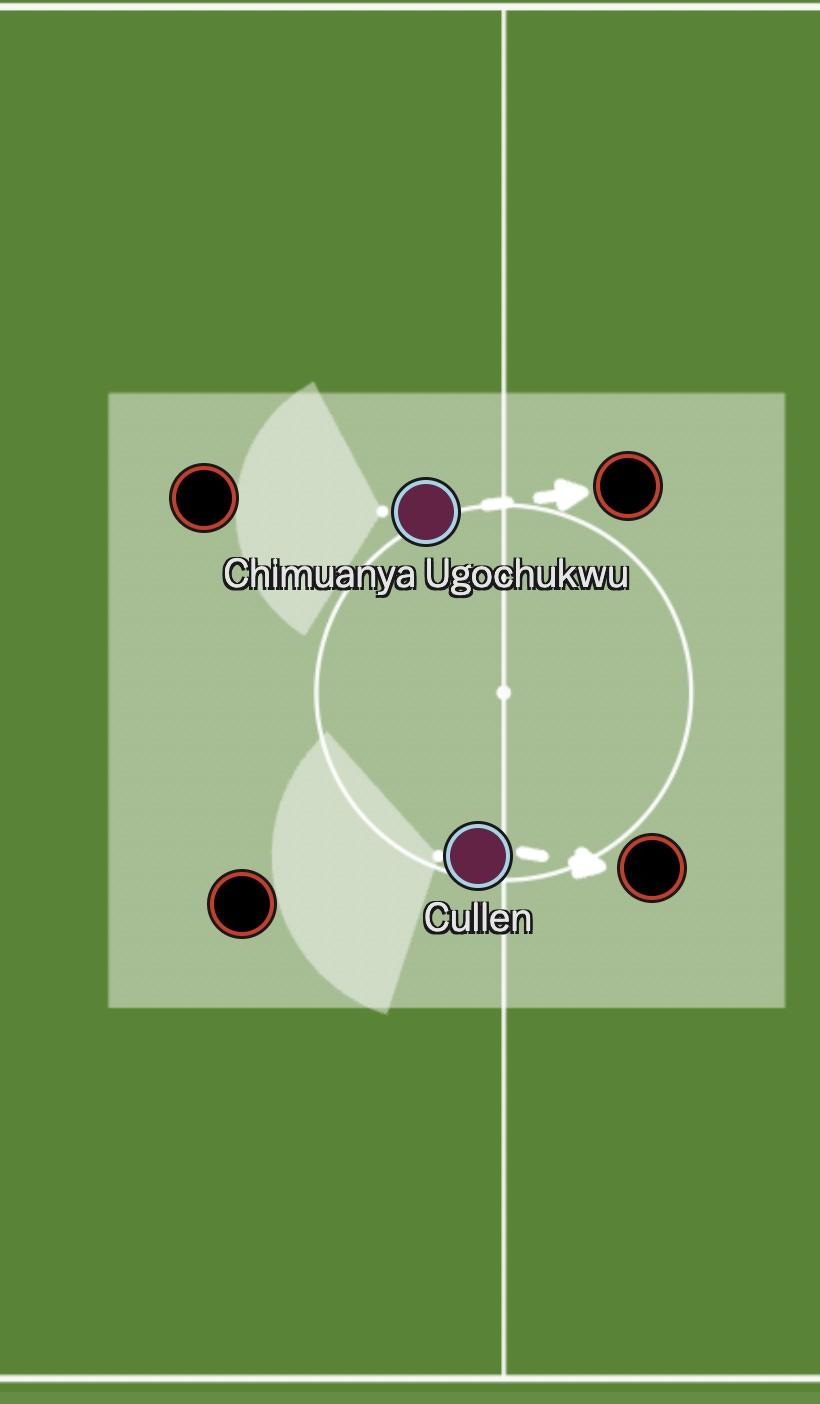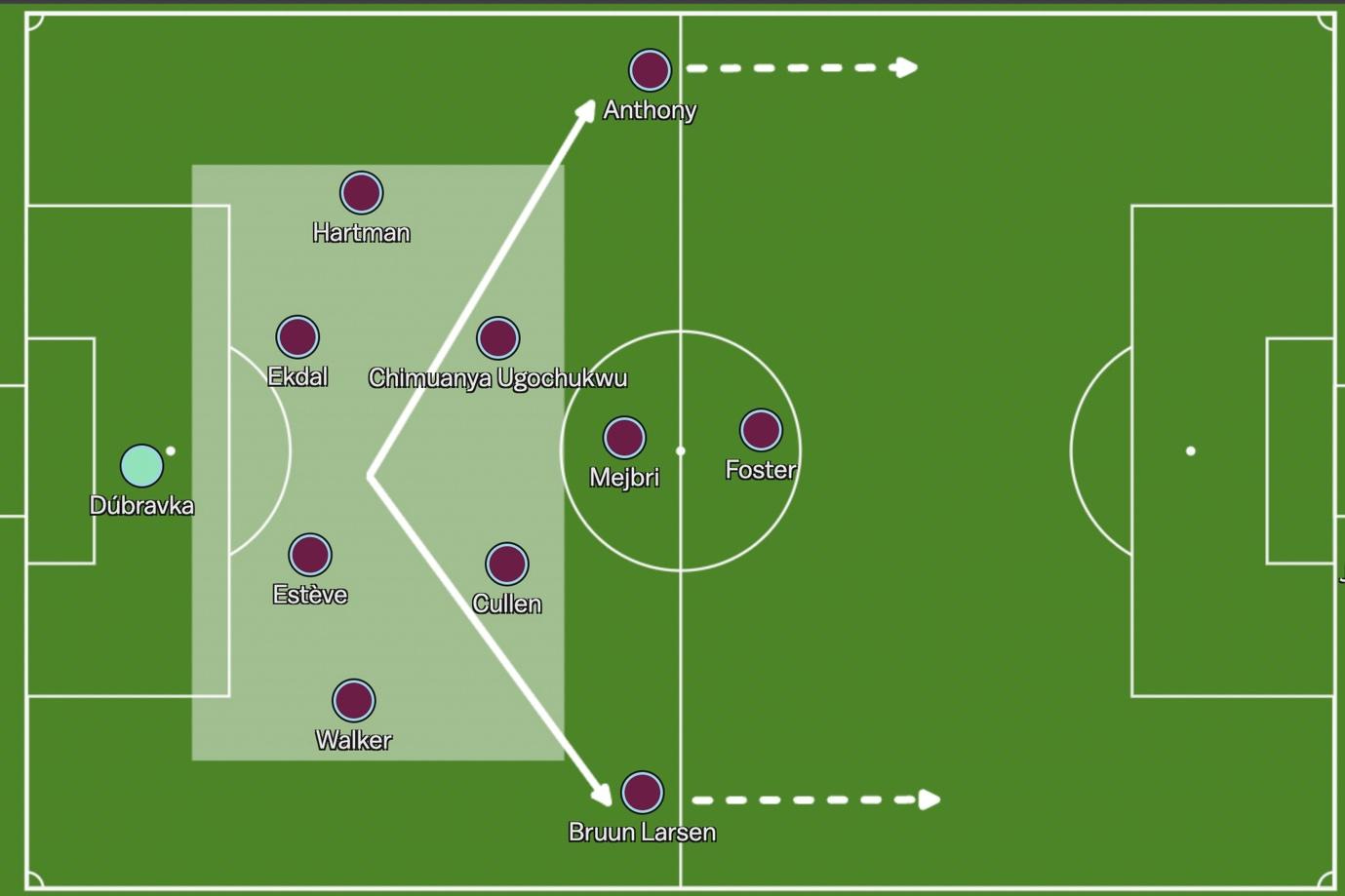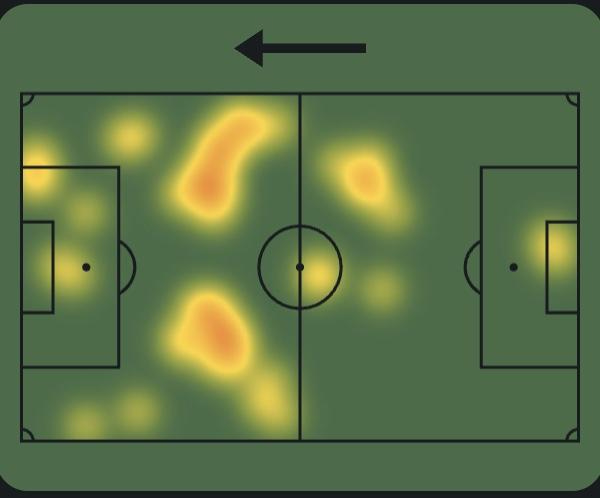On The Fallout this week:
• Man United vs Burnley
• Liverpool vs Arsenal
Man United vs Burnley
The 3–2 scoreline at Old Trafford suggested a close contest, but the underlying dynamics told a more different story. United dominated possession and shot volume, yet their inability to control the flow of the game allowed Burnley to remain competitive through transitions.
Both sides struggled to build through central areas and were often forced to go long. United’s preferred structure involved playing into midfield, bouncing possession to the wide centre-backs, and then clipping longer diagonals. This style aligned with their personnel, especially Bryan Mbuemo and Matheus Cunha, whose direct qualities made them ideal outlets.
United pressed in a sort of 4-4-2 shape, as shown above, with man-to-man coverage in midfield. This approach forced Burnley to go long, preventing them from establishing rhythm in central zones. United’s pressing did succeed in pinning Burnley back, but it also contributed to a game heavily dictated by transitional moments rather than sustained control.
Individual quality wins
The distinction between the two sides was best illustrated by their chance creation, shown below.
Man United key passes.
Burnley key passes.
United had two players who completed more than five key passes, while for Burnley, only one player managed to register even a single key pass. This comparison highlighted the difference in individual quality: United, even if inconsistent, possessed players capable of decisive actions.
Mbeumo’s first touch and movement were standout features, allowing him to control long diagonals with ease, while Cunha’s relentlessness to carry the ball forward consistently unsettled Burnley’s defensive block. These qualities underpinned much of United’s attacking threat, and both have started the season well.
United often attacked with a wide front five, as their wingbacks pushed high and combined with the inside forwards, as shown above. Although not always smooth in execution, this system created overloads and forced Burnley’s compact defensive shape to constantly shift. One example was the decisive penalty incident, where quick combinations and wide pressure ultimately drew Jaidon Anthony into conceding the game altering penalty.
Despite their attacking patterns, United failed to exert true control. Their intensity out of possession dropped in the second half, and with only a midfield two, large spaces began to open. Burnley capitalised by growing into the game, using their wide players to progress attacks and exploiting United’s defensive lapses.
Parker’s Plan
Burnley’s game plan was pragmatic: remain compact, use safe passing zones in deeper areas, and look to progress play through the wings. Out of possession, they forced United wide and narrowed central lanes to prevent access to Amorim’s front three. This approach was largely effective until concentration lapses proved costly. The Premier League’s fine margins were starkly demonstrated, an unfortunate Josh Cullen own goal to open the scoring, followed by Anthony’s giving away of a late penalty, turned what could have been a valuable away result into nothing.
The double pivot of Cullen and Ugochukwu was central to Parker’s approach. Both players worked tirelessly to match United’s midfield pairing, screening the back four and denying passes into the feet of United’s attackers. Their energy allowed Burnley to maintain shape and resist prolonged spells of central progression.
However, Burnley struggled in duels, especially in the first half. United frequently won second balls, sustaining pressure in advanced zones. For a side with relegation concerns, competing physically is essential, and Parker’s team must improve in this aspect to avoid being overrun.
Transitional Threat
Burnley’s attacking output followed their established early-season blueprint: deep circulation within the defence and pivot players to draw out pressure, before releasing the ball wide to initiate transitions. This approach brought efficiency, two goals from just three shots on target. Lyle Foster’s role was crucial, and he really impressed me. As the lone striker, he dropped deeper to hold up possession, link play, and progress Burnley up the pitch.
Burnley also targeted set pieces, keen to exploit Altay Bayindir’s vulnerabilities. They applied consistent pressure on him during set pieces with their opening goal being an example of this.
Things to learn
For United, the match reinforced the need to balance individual attacking quality and far more collective control. Their wide combinations and direct outlet in Mbuemo produced moments of brilliance but lapses in midfield structure and defensive intensity allowed Burnley back into the game. Amorim must find ways to balance attacking risk with greater control, especially when protecting leads.
For Burnley, the performance reflected both progress and familiar shortcomings. Their compactness and transitional ability almost delivered a result at Old Trafford. Yet fine margins, an own goal and late lapse, proved decisive. Improving second-ball competitiveness, concentration, and discipline in critical defensive moments will be vital if Parker’s side are to convert resilience into survival.
Ultimately, this was a game shaped by transitions and individual quality. United’s superior attacking quality delivered, while Burnley’s admirable organisation fell just short. In the unforgiving Premier League, those margins define seasons.
Paid subscribers can read our analysis on Everton Brighton, Plaace vs Forest and Fulham Man Utd. 👇
Keep reading with a 7-day free trial
Subscribe to JLA to keep reading this post and get 7 days of free access to the full post archives.



